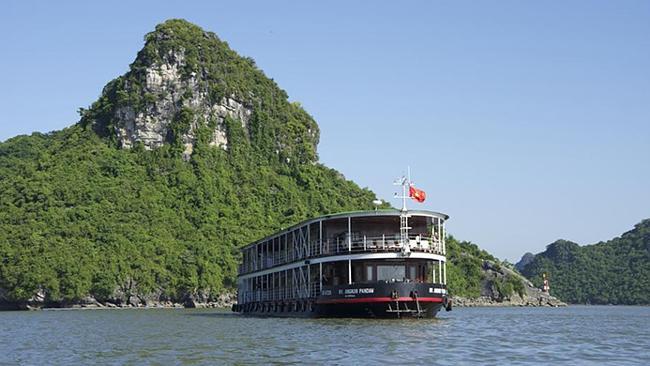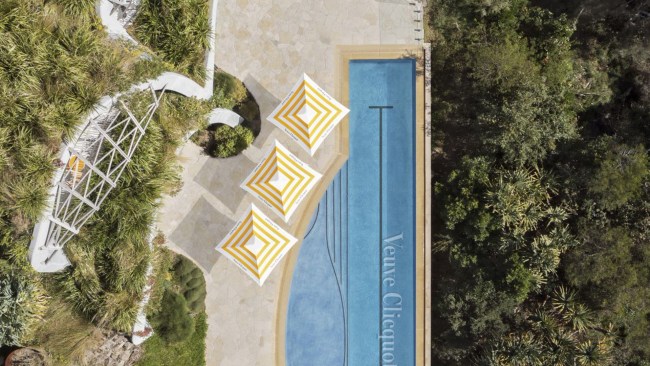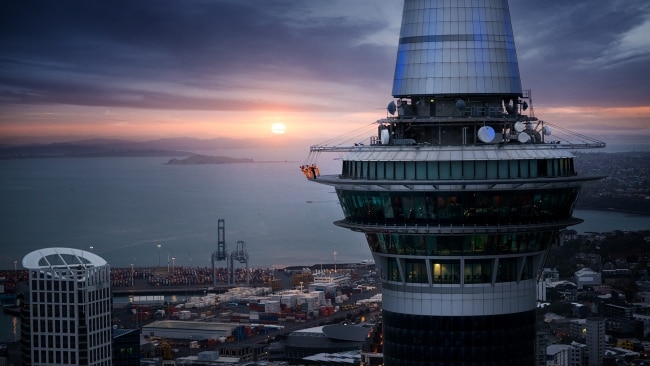Cruise Vietnam’s Hanoi and Halong Bay for culture and cuisine
From the highlands to Hanoi and Halong Bay, the Red River Delta offers a rich insight into Vietnamese culture.

On a circular hill, near the convergence of three rivers, a fairy who had wept a river of tears was comforted by a dragon prince. The fairy, Au Co, and the dragon prince, Lac Long Quan, fell in love and bore a sac of 100 eggs. From these 100 snow-white eggs, the Vietnamese people were born.
At this mythical spot, upstream from Vietnam’s capital, Hanoi, the nation’s ancient kings honoured their founding ancestors by building temples. Today, the Hung kings’ temples are rooted in a region where time-honoured traditions are upheld and life seems to move at the same pace as it perhaps once did when Au Co and Lac Long Quan roamed the land. I am visiting the area on a new Pandaw cruise, the first to navigate the Song Hong or Red River, which passes through Hanoi, and its tributaries in northern Vietnam. Pandaw, which has been operating on the Mekong since 2003, has now decided to venture north.
At Hung Lo village, a group performs a traditional xoan song recital that honours the royal ancestors. Afterwards, the singing villagers show us rice noodles, hanging on horizontal poles like clothes on a washing line, set in a temple courtyard that’s all sweeping dragon roofs and red flags. Conical hat makers demonstrate how Vietnam’s distinctive bamboo-framed hats, mostly worn by rice-paddy workers, are crafted.
The Red River Delta is second only to the Mekong Delta as a rice-growing territory. Everywhere on our route takes us through the iridescent green sea of paddy fields as we listen to tales about the pivotal role that rice plays in Vietnam’s cuisine and culture. At the ancient village of Duong Lam, we discover how different types of rice are chosen for particular soils, before we sup on rice wine in the 300-year-old home of a Catholic family. At Dong Ho village, we visit an artist who combines sticky rice liquid with oyster powder, mixed with natural dye from burnt bamboo leaf, seeds and indigo to fashion rare folk paintings; at Yen Duc, we watch water puppets, made from the wood of the jackfruit tree, enacting rural scenes of rice growing and harvesting on a liquid stage. And at Mai Chau, an exquisitely beautiful high-altitude valley, we learn how hovering dragonflies play a role in the rice farmer’s life.
“Rice farmers watch dragonflies to predict the weather. If they fly low, there will be rain; if they fly high, it will be sunny, in which case the rice farmer will rise early to tend to his paddy before the sun becomes too hot,” our guide, Duc, explains.
After wandering through the paddy fields we dine on rice dishes at the exceptional Mai Chau Ecolodge, where tantalising fresh spring rolls with shrimp and pork are wrapped in a rice paper parcel, and steamed rice is served with grilled pork and fresh, green tea leaves.
For the Vietnamese, rice is the staff of life. Every day in the Pandaw dining room we are served this key ingredient, from banh xeo, a rice crepe stuffed with bean sprouts, vegetables, herbs and tofu, to stir-fried Halong Bay prawns and spring loofah with fragrant steamed rice.
After three-course lunches and a Hanoi beer, afternoons are spent idly gazing at the scenery drifting by, from the loungers and sofas on deck. Clouds flirt with lofty peaks and forests are mirrored perfectly in the still waters that occasionally ripple like silk. Small sampans putter about, their paddles dappling the quiet river. Gently sloping banks, some patched with maize, bananas or sugar cane, shelve into the river’s edge, which anchors duck pens, small brick factories and bamboo jetties.
Pandaw’s RV Angkor is a teak and brass colonial-style boat furnished with 16 double cabins. It navigates the northern pea-green rivers at a leisurely pace. From Viet Tri, we journey 576km upstream to Hoa Binh and Mai Chau before returning downstream through Hanoi and out to Halong Bay. Our journey combines Vietnam’s river pastures, villages dedicated to arts and crafts, and snapshots of local and international industry. At the Russian-built Hoa Binh hydroelectric power plant — surely one of the more unusual cruise stops — we descend into the turbine hall where the background is a huge piece of colourful socialist propaganda.
On our penultimate day, we sail past giant shipping containers at Haiphong, Vietnam’s second-largest port. With early evening cocktails in hand on deck, we are fascinated by the parade of outsized ships, low-slung cargo boats, raised fishermen’s shacks that resembled dog kennels on stilts, and the clink and clank of heavy industry.
From Haiphong, RV Angkor emerges into the teal-green waters of Halong Bay, where soaring limestone karsts loom over us. Legend relates that Lac Long Quan sprayed a thousand pearls from his mouth, which erupted into the hundreds of karsts now scattered in the bay. It isn’t hard to conjure a descending dragon (the meaning of Halong) amid this other-worldly seascape.
After Halong Bay the boat makes its way back to Thang Long (ascending dragon), the ancient name for Hanoi. Although the city is the capital of Vietnam, the majority of Vietnam’s ancient kings ruled from the Red River Delta area from 2000BC, their seat of empire following Au Co’s river of tears that led from the Hung kings’ temples to the sea. Sailing through this intriguing heartland has opened a window on the people, paddies, pagodas, landscapes and history of this fabled land.
THE INDEPENDENT



To join the conversation, please log in. Don't have an account? Register
Join the conversation, you are commenting as Logout